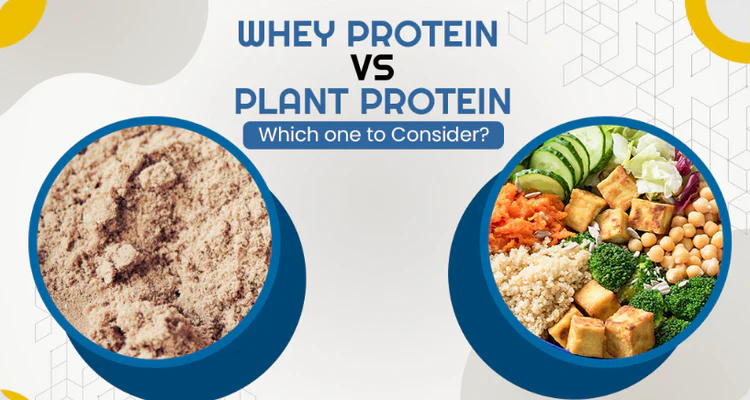When it comes to building muscle, recovering after workouts, or simply staying healthy, protein is the nutrient most people focus on first. But a common question arises: should you rely on whey protein supplements or stick to regular protein foods like chicken, eggs, fish, and lentils?
Both options have their own strengths, and the truth is—there’s no one-size-fits-all answer. Instead, it depends on your fitness goals, lifestyle, budget, and health needs. In this guide, we’ll break down the differences between whey protein and whole food protein sources so you can make the best choice for your diet.
What is Whey Protein?
Whey protein is derived from milk during the cheese-making process. After filtration and drying, it becomes a fine powder rich in protein and essential amino acids, particularly branched-chain amino acids (BCAAs), which are key for muscle repair and growth.
- Absorption speed: Whey is quickly digested and absorbed, making it an excellent post-workout option.
- Convenience: It takes seconds to mix into a shake, perfect for busy lifestyles.
- Protein quality: Considered one of the highest quality proteins, with a complete amino acid profile.
In countries like Pakistan, whey protein has become increasingly popular among gym-goers and athletes. While quality whey protein is effective, it’s worth noting that whey protein price in Pakistan can vary significantly depending on the brand, import taxes, and authenticity of the product. This cost factor often makes people compare it with traditional food sources.
What are Regular Protein Foods?
Regular protein foods refer to natural dietary sources such as:
- Animal-based proteins: chicken, fish, beef, eggs, and dairy.
- Plant-based proteins: beans, lentils, chickpeas, nuts, and tofu.
These foods don’t just provide protein; they come with additional nutrients like vitamins, minerals, healthy fats, and fiber. For example:
- Eggs offer choline and vitamin D.
- Fish provide omega-3 fatty acids.
- Beans and lentils supply iron and fiber.
While they require cooking and preparation, regular protein foods are generally more nutritionally diverse than supplements.
Nutritional Comparison: Whey Protein vs Regular Foods
| Factor | Whey Protein | Regular Protein Foods |
| Amino Acid Profile | Complete, high BCAAs | Complete (animal) or partial (plant-based) |
| Absorption Speed | Fast (30–60 min) | Slower, gradual release |
| Micronutrients | Minimal (unless fortified) | Rich in vitamins, minerals, fiber, healthy fats |
| Convenience | Quick & portable | Requires prep and cooking |
| Satiety | Less filling | More filling, supports appetite control |
In short: Whey protein excels in speed and convenience, while regular foods deliver broader nutrition and satiety.
Practical Considerations for Different Lifestyles
- Gym-goers & athletes: Whey is excellent post-workout due to rapid absorption. Whole foods should still form the bulk of meals.
- Busy professionals: Whey shakes provide a quick solution when you don’t have time to cook.
- Budget-conscious individuals: Whole foods like eggs, lentils, and chicken often provide more protein per rupee compared to premium whey powders.
- Vegetarians or lactose-intolerant: Plant proteins and lactose-free whey isolates are better choices.
Cost & Convenience Factor
Cost is often a major deciding point. A serving of whey protein can cost more per gram of protein compared to boiled eggs or lentils. For example, in Pakistan, the whey protein price is influenced by imports, currency fluctuations, and brand authenticity, making it a relatively expensive option compared to local protein foods.
That said, the time saved by not cooking and the convenience of having 25 grams of protein in one scoop often justifies the expense for people with busy schedules.
Which is Better for Muscle Building & Recovery?
Research shows both whey protein and whole foods support muscle growth—as long as you meet your daily protein requirement.
- Whey protein: Best immediately after workouts when your muscles need fast-absorbing amino acids.
- Regular protein foods: Better for sustained release throughout the day, keeping you full and nourished.
For maximum results, many athletes combine both: whey shakes around workouts and regular meals the rest of the day.
Potential Downsides & Misconceptions
- Over-reliance on whey: Supplements should not replace real food. You miss out on micronutrients, fiber, and healthy fats.
- Digestive issues: Some people experience bloating or lactose sensitivity with whey.
- “Whey is unnatural” myth: Whey is a natural dairy by-product; it’s just processed into powder.
Balanced Approach: Best of Both Worlds
Instead of choosing one over the other, think of whey protein as a supplement to your diet, not a substitute.
For example:
- Post-workout: 1 whey shake.
- Meals: chicken, lentils, or eggs paired with vegetables and whole grains.
This way, you get the convenience of whey plus the nutritional richness of whole foods.
FAQs
1. Is whey protein better than natural food?
Not necessarily. Whey is convenient and fast, but whole foods provide more nutrients overall.
2. Can regular food replace protein powder?
Yes, if you eat enough variety and quantity of protein foods. Whey is just a convenient option.
3. Which is healthier: whey protein or protein foods?
Whole foods are healthier due to additional nutrients. Whey is not unhealthy but is best seen as a supplement.
4. Do you need whey if you eat enough protein foods?
No, but it can help athletes or busy individuals reach daily protein targets easily.
Conclusion
When comparing whey protein vs regular protein foods, the real winner is balance. Whey protein shines in terms of speed, convenience, and post-workout recovery, while whole foods dominate in nutrient diversity, satiety, and long-term health benefits.
If you’re in Pakistan, your decision may also be influenced by whey protein price in Pakistan, which is often higher than cooking with local protein-rich foods like eggs, chicken, or lentils.
Read More Gorod








